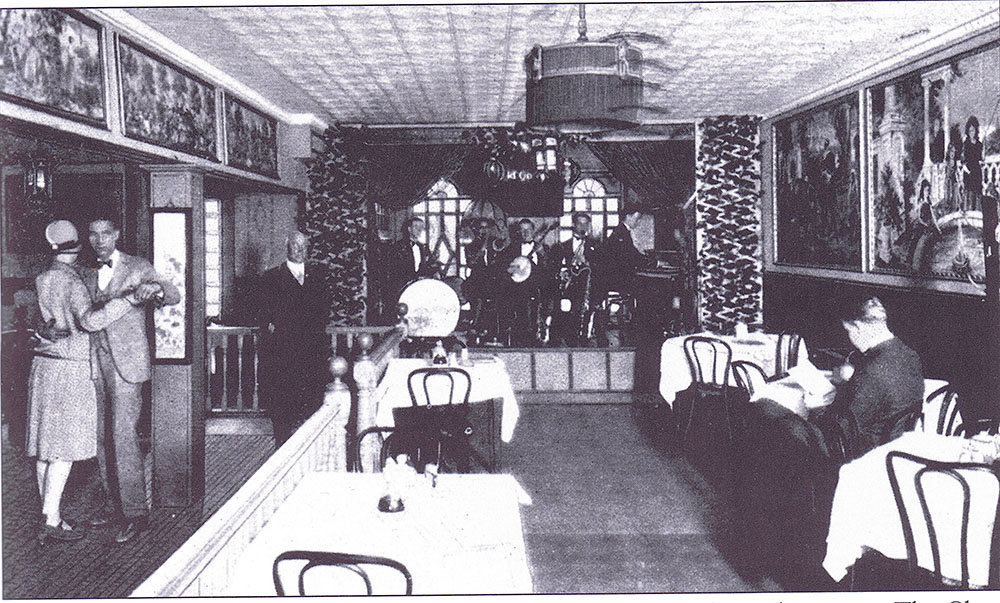
A mid 1920’s postcard shows the interior of the second floor restaurant.
By Mary McTamaney
Happy Year of the Rabbit! In the Chinese lunar calendar, a new year has just begun and it is linked to the astrological symbol of the rabbit. The previous year just ending was the Year of the Tiger. Twelve symbols mark and guide the years and indicate the energy that the heavens – particularly the moon – direct toward us on earth. So, we, particularly people of the Chinese diaspora, are entering a new phase. For twelve months, the moon goddess will offer us opportunities for peace and contemplation.
The Year of the Rabbit, each time it comes around, is said to direct tranquil energy toward us. The gentle character of the rabbit reminds us to focus on our intellect and to exercise our instincts for caution and empathy. Those guiding principles could make this a far better year than those we have recently lived through.
Caution, empathy and intellect can’t visit us soon enough. Just as the new lunar year was dawning, another mass shooting took place and it was in the Asian community of California. So, the rabbit spirit has not reached most of us yet. It caused me to think of the photographs shared with me this month, three of which were published in this column last week. One Broadway scene from that 1913 collection shows the Chop Suey Restaurant on Broadway between Liberty and Chambers Street. I wondered who the owners were and what their experience might have been within Newburgh’s little ethnic melting pot of the early 20th century – a time of massive migration and immigration.
I explored directory and census information and found that the Chop Suey Restaurant was owned and operated by William Woo. The business went by a few names, The Oriental Restaurant, The Chinese Restaurant, The Far East Restaurant and The Chop Suey Restaurant, all indicating that the cuisine would be distinct. Mr. Woo and his chefs probably marketed their food choices around popular American understanding, or misunderstanding, of their culture. During their four decades of service to Newburgh, America experienced a couple of wars that set people on edge about the cultures around the Pacific rim. I also looked in the wonderful book by historian Pat Favata, Newburgh – The Heart of the City, and found a postcard reproduction of the interior of the Chop Suey Restaurant taken in the mid-1920’s. (The book is a brief photographic history of Broadway from Colden Street to the city line.) Mr. Woo aimed to please his clientele and had a bandstand in the rear of the restaurant where music for dancing was offered in the evenings. The Chop Suey looks warm and inviting, and the postcard explains that the place was open daily from 11 a.m. so lunch or dinner or a quick bite after a movie was always available.
Other Chinese restaurants don’t appear in directories for pre-war Newburgh but many Chinese laundries do. The laundries show up across the city from South Street to Washington Heights. The Lee, the Sing, the Wah and the Wong families ran many of them through the years. In the old directories, the merchant’s name and home address usually follows the address of a business. In the case of all the Chinese laundries there is no home address, leading me to believe these hard-working entrepreneurs lived in quarters above or behind their laundries. I was able to discover that Harry Sing did live over his 132 South Street laundry and Charlie Woo above his 41 Smith Street laundry. Their work was never easy, as anyone who ever worked in a commercial laundry can tell you (I did one summer and the steam press was hell on a July day). When their day was finally done, how easy was their leisure time? How welcome and included were they in neighborhood life? I haven’t yet found documentation (interviews, memoirs, newspaper features, etc.) of Chinese life in Newburgh. So, I’m suspicious that few neighbors lived under the influence of the moon goddess’ rabbit and its true sense of empathy.